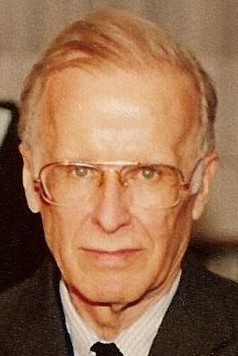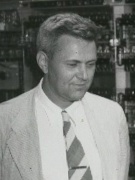Today In Computing

John Backus died this month.
Died: March 17, 2007
John Warner Backus was an American computer scientist who worked for IBM. In 1953 Backus developed the language Speedcoding, the first high-level language created for an IBM computer. Then in 1954 he directed the team that invented and implemented FORTRAN, the first widely used high-level programming language. Backus also worked on both ALGOL 58 and ALGOL 60.
Birthplace: Wilmington, Delaware, USA 🇺🇸
- Sources:
- Wikipedia

Norbert Wiener died this month.
Died: March 18, 1964
Norbert Wiener was an American mathematician and philosopher. He was a professor of mathematics at the Massachusetts Institute of Technology (MIT) and a child prodigy gaining his PHD by the age of 19. Wiener is considered the originator of cybernetics, the science of communication as it relates to living things and machines. His work was an important early step towards the development of modern Artificial Intelligence.
Birthplace: Columbia, Missouri, USA 🇺🇸
- Sources:
- Wikipedia

Julian Bigelow was born this month!
Born: March 19, 1913
Julian Bigelow was a pioneering American computer engineer. He worked with John von Neumann at the Institute of Advanced Study as the chief engineer on the IAS Machine (MANIAC) which was completed in 1951. The IAS Machine was one of the first computers built based on the Von Neumann Architecture for stored program computers. In 1943 Bigelow also coauthored one of the founding papers on cybernetics and modern teleology, "Behavior, Purpose and Teleology".
Birthplace: Nutley, New Jersey, USA 🇺🇸
- Sources:
- Wikipedia

Friedrich Ludwig Bauer died this month.
Died: March 26, 2015
Friedrich Ludwig Bauer was a German pioneer of computer science and professor at the Technical University of Munich. During the early 1950s he worked on the logical relay computer STANISLAUS and is cited as the first person to propose the stack method of expression evaluation. He is most famous for his contributions to the development of ALGOL 58 and ALGOL 60.
Birthplace: Regensburg, Germany 🇩🇪
- Sources:
- Wikipedia

Wilhelm Ackermann was born this month!
Born: March 29, 1896
Wilhelm Friedrich Ackermann was a German mathematician and logician best known for his work in mathematical logic and the Ackermann function. In 1928 he published the Decision Problem (Entscheidungsproblem) with David Hilbert which asked whether all problems are computable. This problem was solved by Alan Turing and Alonzo Church in 1936 and led to the definition of the Turing Machine and modern, digital computer.
Birthplace: Herscheid, Germany 🇩🇪
- Sources:
- Wikipedia